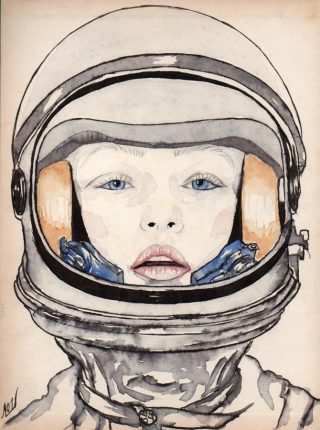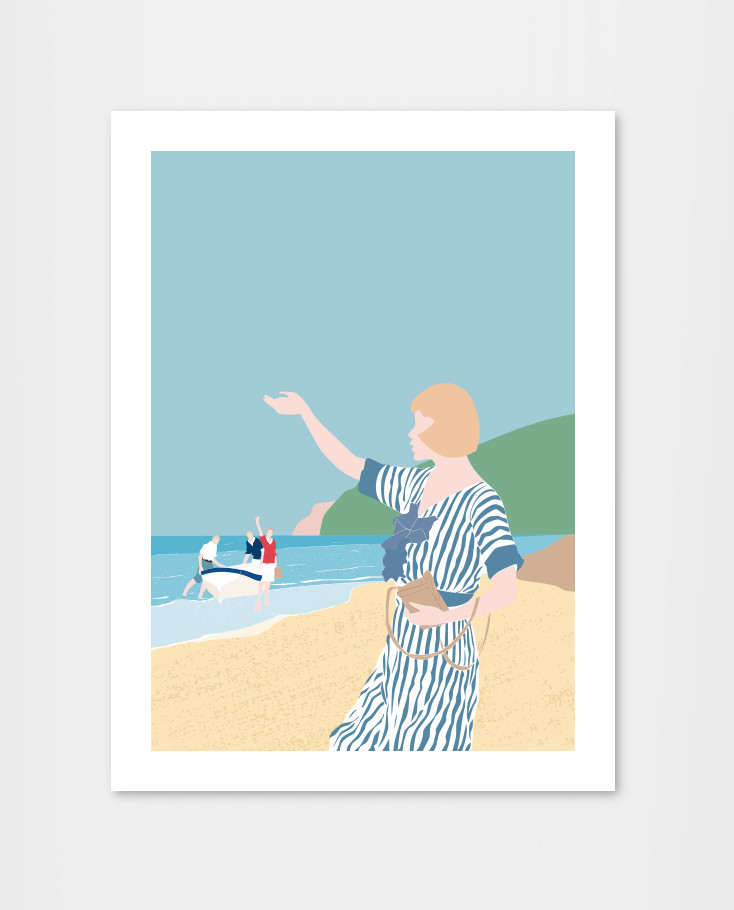Today i found this ancient recipe to perform the ancient technique of aluminizing prints, from alum, also called miniature, i never used this technique but i want to share it with you.
Aluminizing (from alum) the black and white prints.
Before the invention of chromolithography, this kind of miniature was in vogue in the 19th and previous centuries, if it is possible to find lithographs and prints of the time they will sometimes have a certain flavor of small works of art.
 This way of painting is very simple and within everyone’s reach, requiring almost no knowledge of the drawing or very little, giving it to the same subject that you want to color. And those who have a good taste for color can find a delightful pastime in this occupation, not without satisfaction.
This way of painting is very simple and within everyone’s reach, requiring almost no knowledge of the drawing or very little, giving it to the same subject that you want to color. And those who have a good taste for color can find a delightful pastime in this occupation, not without satisfaction.
The only boring part of the illumination is reduced to the gluing of the paper if it was without glue and to make sure of this the lithograph or the print is wetted with the tongue, if the saliva passes on the other side it is a sign that the paper is not glued and then you have to give her a hand of the following mixture composed of:
Water 1 and 1/2 liters.
Flanders glue 24 grams.
Rock alum 48 grams.
White soap 8 grams.
In a container containing half a liter of water, the chopped glue is put, heating it until boiling, mixing the mass from time to time. Once this operation is completed, the liquid is poured into another container. In the same quantity of water, the rock alum is heated, stirring until it is completely dissolved; and this solution is poured into the container containing the glue.
In the third half liter of water, put the soap cut into very fine pieces, then dissolving it in heat; finally, all the ingredients are combined and filtered through a canvas. Every time the mix is used, it must be heated a little, someone recommends preparing the prints with a simple solution of water, 1000 parts, and rock alum five parts; others with very liquid gelatine 100 parts of water and 5 parts of glue.
The preparation is done with a wide flat brush, first passing over the imprinted part and then on the reverse side to let the paper dry by spreading the print on a napkin, or better yet, suspending it by the corners on a rope, with two pins to make the work more easy and even better, it is better to mount the print on a drawing board or on a slightly thick cardboard, and in the following way. First of all, a sponge soaked in water is passed over the imprinted part and when it is well soaked, the margins are raised around for about two or 3 cm then, from beams over the arabic gum, they fold and flatten passing over the nail , placing a sheet of paper under the rub for greater safety and cleaning.
For aluminizing, watercolor colors are needed and those in godet or tubes are preferable and require the following:
White to silver.
Yellow ocher.
Light chrome yellow.
Gout gum.
Natural Sienna.
Sienna burnt.
Yellow brown matterhorn.
Saturn red.
Chinese vermilion.
Red earth.
Pink guarantee.
Walk lacquer.
Carmine.
Brown Van Dyck.
Cobalt.
Cerulean blue.
Prussian blue.
Overseas.
Indigo.
Pinè gray.
Lamp black.
Green emerald.
Vegetable green.
Natural amber earth.
Burnt amber earth.
Colored sepia.
Cadmium white and yellow are preferable to those prepared for gouache. As they are colored on the prints, the lithograph is the one that best lends itself to the complexion and must preferably choose the pale one, thus giving the much fresher intonation, of a black which has dirty and gloomy hues. And in this case, to revive the complexion, you have to add the colors a little white like a gouache, doing the same in all the colors for the retouches, but not in the dark parts of a stronger tone.
If the print run is perhaps too black, and refuses the color due to excess printing ink, then you pass over it with a sponge soaked in salt water or gall. In coloring we always start from the part of the composition that must give the note of intonation of the effect: the figure, if it is a gender subject; the sky, if it is a landscape or a marina; and first of all they put on light hues, trying to leave out the whites, and what you can’t help but cover will bounce back with white.
The color must be well diluted and not too dense, transparent and with a tint that had rather pale when it is dry, the colors must be put on safely otherwise returning to it would result in stains that are difficult to remove. The contours must be followed exactly when a color did not result in the desired tint can be high, pens I leave everything; however, handle slightly so as not to scratch the surface of the paper. The job requires two brushes: one for the colors, the other, soaked in water, removing the superfluous, pressing it on a sheet, it is used to blend the passages of the colors I have to obtain the gradations of color. Sponge, penknife and scraper, gouache and rubber are used as subsidiary means for extracting light and light.
In painting it is better to stick to a principle and follow a reasonable direction to color well. We will show you the best. Start by composing a tint of indigo S.p.A. adding a little Carminati lacquer to make it less cold, with which, without exception, you will cover all parties in the shade; then slightly put the respective successful Cunha part tints, which must be merged into the shadows; you will pass with the shadows, and for the retouches that must be put with an artistic taste you will pass over the glazes; ending with gouache and gum arabic. The gum arabic is of great help in the complexion; giving vigor and transparency to the shadows, however, must be applied with knowledge and without abuse. On strong shadows, stretched with water, the assistant slightly and dexterously, like a veil. It is prepared by dissolving two thirds of gum arabic and one third of white sugar in cold water, adding a little alcohol.
